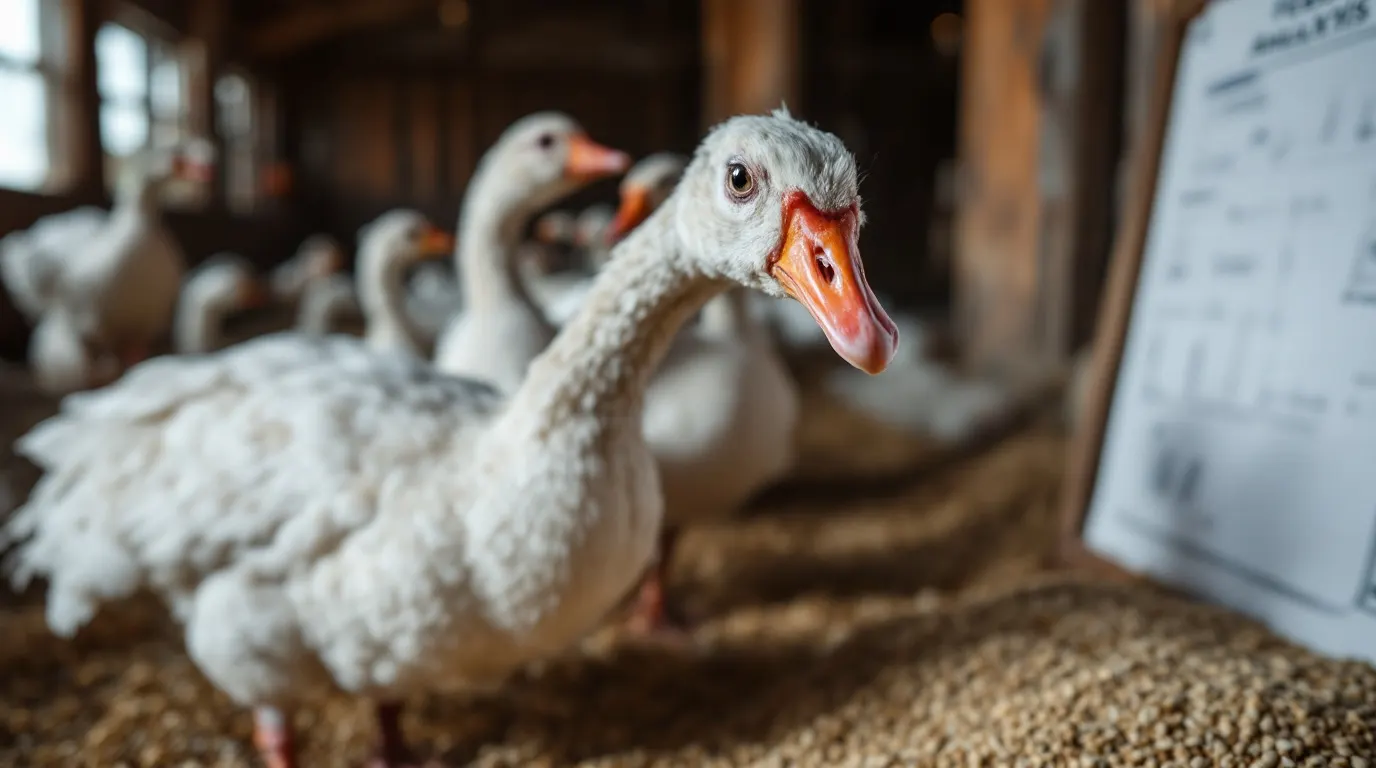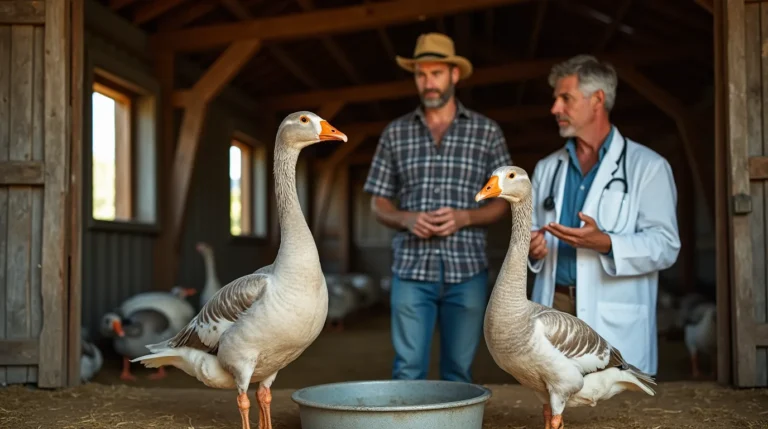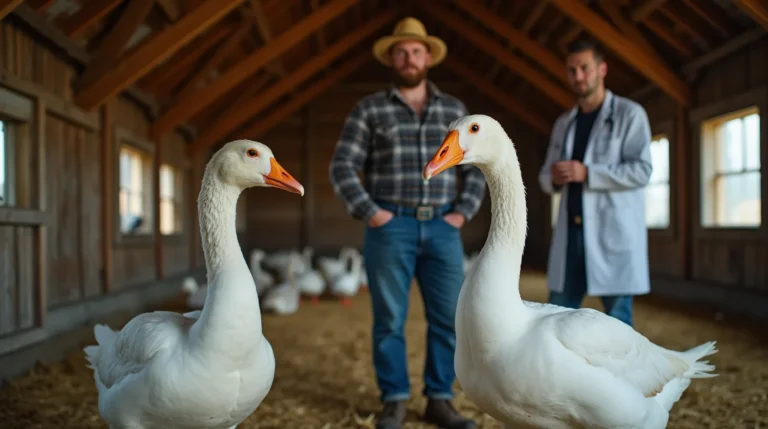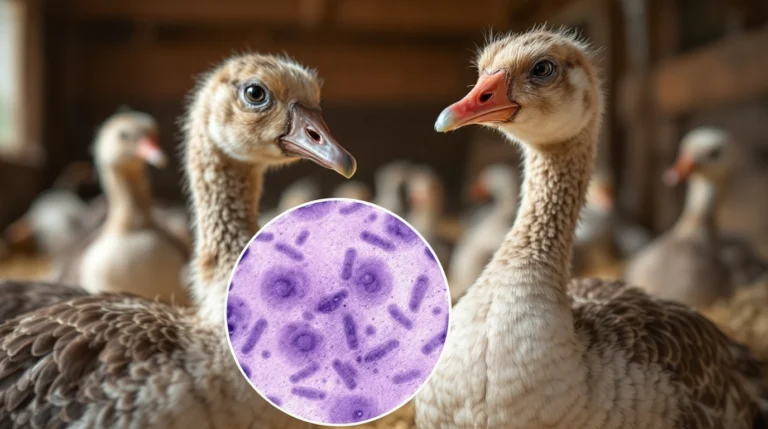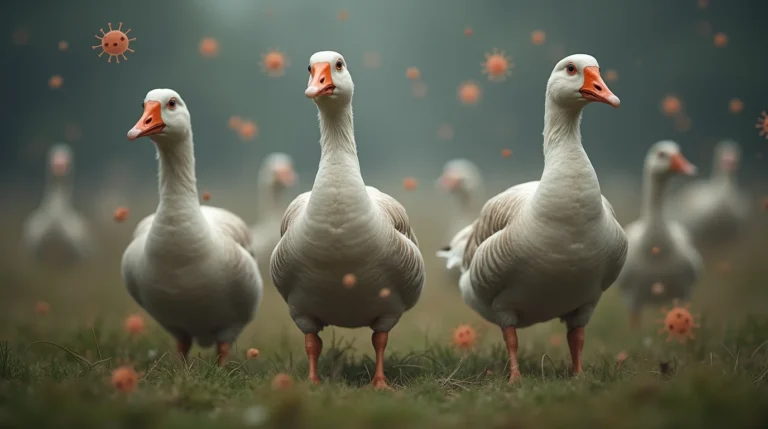Protect your geese from hidden nutritional threats! Discover expert insights on feed contamination in Geese , health risks, and essential prevention strategies for optimal goose care.
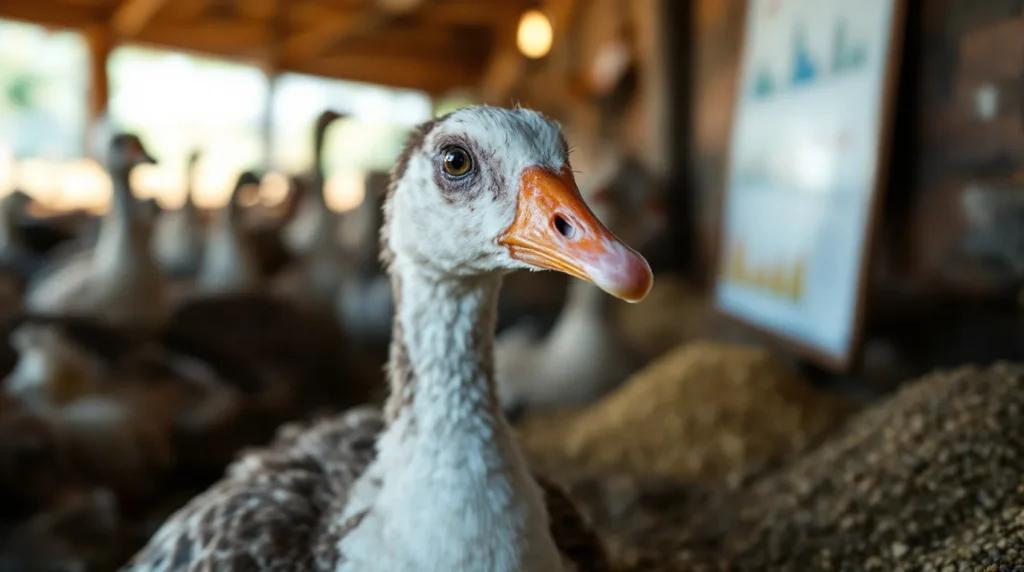
Table of Contents
Geese are remarkable birds that require meticulous nutritional management, and feed contamination represents one of the most critical yet often overlooked challenges in poultry health management. Whether you’re a commercial farm owner, a veterinary professional, or a passionate goose caretaker, understanding the intricate landscape of feed contamination can mean the difference between thriving and struggling flocks.
Feed contamination in geese is not merely a theoretical concern—it’s a tangible threat that can compromise entire populations, leading to significant economic losses and potentially devastating health consequences. This comprehensive guide will explore the five most critical hidden dangers in goose feed, equipping you with actionable knowledge to safeguard your feathered charges.
Understanding Feed Contamination: A Comprehensive Overview
What is Feed Contamination?
Feed contamination occurs when harmful substances—including biological, chemical, or physical agents—infiltrate goose nutrition, creating potential health risks. These contaminants can originate from multiple sources, ranging from agricultural practices to storage and handling processes.
The Potential Impact of Feed Contamination
- Reduced flock productivity
- Compromised immune system
- Increased veterinary intervention costs
- Potential long-term health complications
- Economic losses for farm operations
The 5 Hidden Dangers of Feed Contamination in Geese
1. Mycotoxin Contamination: The Silent Threat
What Are Mycotoxins?
Mycotoxins are toxic compounds produced by various mold species that can grow on feed ingredients during production, processing, transportation, or storage.
Key Risks:
- Immune system suppression
- Reduced nutrient absorption
- Potential reproductive complications
- Organ damage, particularly liver and kidney
Prevention Strategies:
- Regular feed testing
- Proper storage in cool, dry environments
- Using moisture-resistant feed containers
- Implementing strict quality control measures
2. Bacterial Pathogens: Microscopic Menaces
Common Bacterial Contaminants
- Salmonella
- E. coli
- Campylobacter
- Clostridium
Transmission Risks:
- Cross-contamination during feed production
- Inadequate feed processing
- Poor storage conditions
- Contaminated water sources
Mitigation Techniques:
- Heat treatment of feed
- Rigorous cleaning protocols
- Implementing biosecurity measures
- Regular microbiological testing
3. Heavy Metal Accumulation: Environmental Toxicity
Primary Contamination Sources:
- Agricultural runoff
- Industrial emissions
- Soil composition
- Water sources
Potential Heavy Metals:
- Lead
- Mercury
- Cadmium
- Arsenic
Health Implications:
- Neurological disorders
- Metabolic disruptions
- Reproductive challenges
- Compromised immune response
4. Pesticide and Chemical Residues
Contamination Pathways:
- Treated agricultural fields
- Grain processing facilities
- Transportation and storage environments
- Indirect environmental exposure
Potential Consequences:
- Cellular damage
- Hormonal disruptions
- Reduced fertility
- Long-term genetic implications
5. Nutritional Imbalances and Adulterants
Common Adulterants:
- Unauthorized protein sources
- Inferior grain qualities
- Synthetic additives
- Unauthorized growth promoters
Detection Challenges:
- Complex supply chains
- Limited testing capabilities
- Variability in feed composition
Recommended Health Products for Geese
Amazon Affiliate Recommendations
- Premium Poultry Feed Test Kit
- Comprehensive contaminant screening
- Easy-to-use home testing
- Rapid results within 15 minutes
- Ideal for proactive farm management
- Advanced Mycotoxin Binder Supplement
- Natural ingredient composition
- Supports immune system
- Enhances feed conversion rates
- Veterinarian-recommended formulation
- Professional-Grade Feed Storage Container
- Moisture-resistant design
- UV protection
- Sealed environment
- Multiple size options
- Digital Moisture Meter for Feed
- Precision measurement
- Prevents mold growth
- Compact and portable
- Essential for feed quality control
Feed Contamination in Geese (FAQ)
Q1: How often should I test my geese’s feed for contamination? A: Recommended testing frequency is quarterly, with additional tests after significant environmental changes or suspected contamination events.
Q2: Can feed contamination be completely prevented? A: While 100% prevention is challenging, implementing comprehensive management strategies can significantly minimize risks.
Q3: What are the initial signs of feed contamination in geese? A: Watch for reduced feed intake, decreased egg production, unusual droppings, lethargy, and unexplained weight loss.
Q4: Are organic feeds automatically safer? A: Not necessarily. Organic feeds require equally rigorous testing and quality control measures.
Conclusion
Feed contamination in geese represents a complex challenge requiring vigilant, multifaceted management. By understanding these hidden dangers and implementing proactive strategies, you can protect your flock’s health and optimize their nutritional well-being.
Call to Action: Share your experiences with feed management in the comments below! Have you encountered unique challenges in maintaining goose nutrition? Your insights could help fellow poultry enthusiasts.
Explore More: Visit BlithePet for comprehensive poultry care guides and expert recommendations.
Disclaimer: This article is for informational purposes and should not replace professional veterinary advice.

